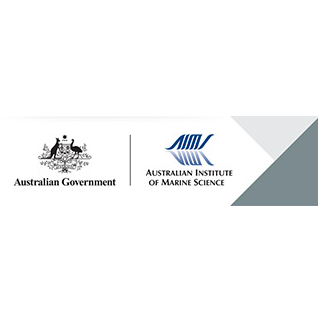Brief description
Sponges were experimentally farmed at three sites in the Yorke Islands: Kodall Island North, Masig Island East and Masig Island North. Sites were located on the leeward side of the islands. At each site, Coscinoderma matthewsi explants were farmed at a depth of 12 m, using riser lines, approximately 3 m apart. For each farming experiment, 10-50 sponges were partially harvested, whereby one third of each sponge was left behind to regrow. The collected sponge tissue was cut into explants, each with at least one side still covered in pinacoderm. At no time were sponges or explants exposed to air. For each experiment, 15-20 explants were measured at the start of the experiment to determine initial explant size and all surviving explants were measured at the end of each experiment. The length, width and height of each explant were measured with a ruler to the nearest centimeter and the volume calculated. Because of slight differences in initial size between some explants, percent growth was calculated.Explants of Coscinoderma matthewsi were experimentally farmed for nine months using three methods, threaded line, mesh and mesh-line, with each method testing two material types. Coscinoderma matthewsi was experimentally farmed at Kodall North and Masig North, with three riser lines per treatment at each site. Each riser line had 6 explants, thus 36 explants were cultured per treatment. In total, 216 explants were experimentally farmed with a mean initial size of 113 ± 9 cm³.Coscinoderma matthewsi was experimentally farmed at Kodall North, Masig East and Masig North, with explants transplanted at the end of summer (March 2005) and at the end of winter (September 2005). Explants would therefore experience either falling or rising water temperatures, respectively, for the first 6 months of culture. Two riser lines were deployed per farming site/seasonal transplant, with one mesh panel holding 6 explants attached to each riser line at 6 and 12 m. Due to inadequate flotation, the riser lines were not vertical in the water column through out the entire tidal cycle, and thus we could not accurately determine the effect of depth. Twenty-four explants were farmed per site/seasonal transplant, with 144 explants experimentally farmed in total. The mean initial size of explants between sites/seasons ranged from 166 ± 15 to 255 ± 18 cm³. This experiment ran from March 2005 to September 2006.A temperature recorder (HOBO® Water Temp Pro), deployed at 12 m at the Masig North site, recorded water temperature during the length of the project. A water flow meter (General Oceanics INC) was also deployed for 24 hr periods for three times at each site.At Kodall North, explants of three initial sizes were experimentally farmed: small, 39 ± 5 cm³; medium, 104 ± 8 cm³; and large, 313 ± 27 cm³. Explants were farmed inside mesh panels, attached to riser lines. Three riser lines were used, each holding 5 explants of each size treatment. In total, 45 explants were cultured. This experiment started in June 2005 and ran for 6 months.A temperature recorder (HOBO® Water Temp Pro), deployed at 12 m at the Masig North site, recorded water temperature during the length of the project. A water flow meter (General Oceanics INC) was also deployed for 24 hr periods for three times at each site. This research was undertaken to develop aquaculture methods for optimal and environmentally sustainable commercial production of bath sponges in at least one location selected for the project. Another aim of this project was to promote the transfer of skills and technology from this project directly into the local community, by involving York Islanders in diving and monitoring the farming experiments.Lineage
Maintenance and Update Frequency: notPlannedNotes
CreditDuckworth, Alan R, Dr (Principal Investigator)
Modified: 17 10 2024
text: westlimit=143.447233; southlimit=-9.739589; eastlimit=143.447233; northlimit=-9.739589
text: westlimit=143.408007; southlimit=-9.752074; eastlimit=143.408007; northlimit=-9.752074
Farming bath sponges in tropical Australia: Duckworth AR, Wolff CWW and Evans-Illidge EA (2009) Farming bath sponges in tropical Australia. World Aquaculture. 40: 20-22, 70.
local : 11068/8058
Exploring the potential of bath sponge aquaculture in Torres Strait: Duckworth AR, Wolff CWW, Evans-Illidge EA, Morris J, Lowatta S, Naawi S, Lowatta P and Mosby P (2007) Exploring the potential of bath sponge aquaculture in Torres Strait. CRC-TS Task Number: T1.6a. Australian Institute of Marine Science. 48 p.
local : 11068/7417
Bath sponge aquaculture in Torres Strait, Australia: effect of explant size, farming method and the environment on culture success: Duckworth AR and Wolff CWW (2007) Bath sponge aquaculture in Torres Strait, Australia: effect of explant size, farming method and the environment on culture success. Aquaculture. 271: 188-195.
local : 11068/7526
Map
uri :
https://data.aims.gov.au/mestmapkml/4878e3e8-f1ec-4b78-ab6a-969a1790b6d4.kml![]()
- global : 4878e3e8-f1ec-4b78-ab6a-969a1790b6d4


